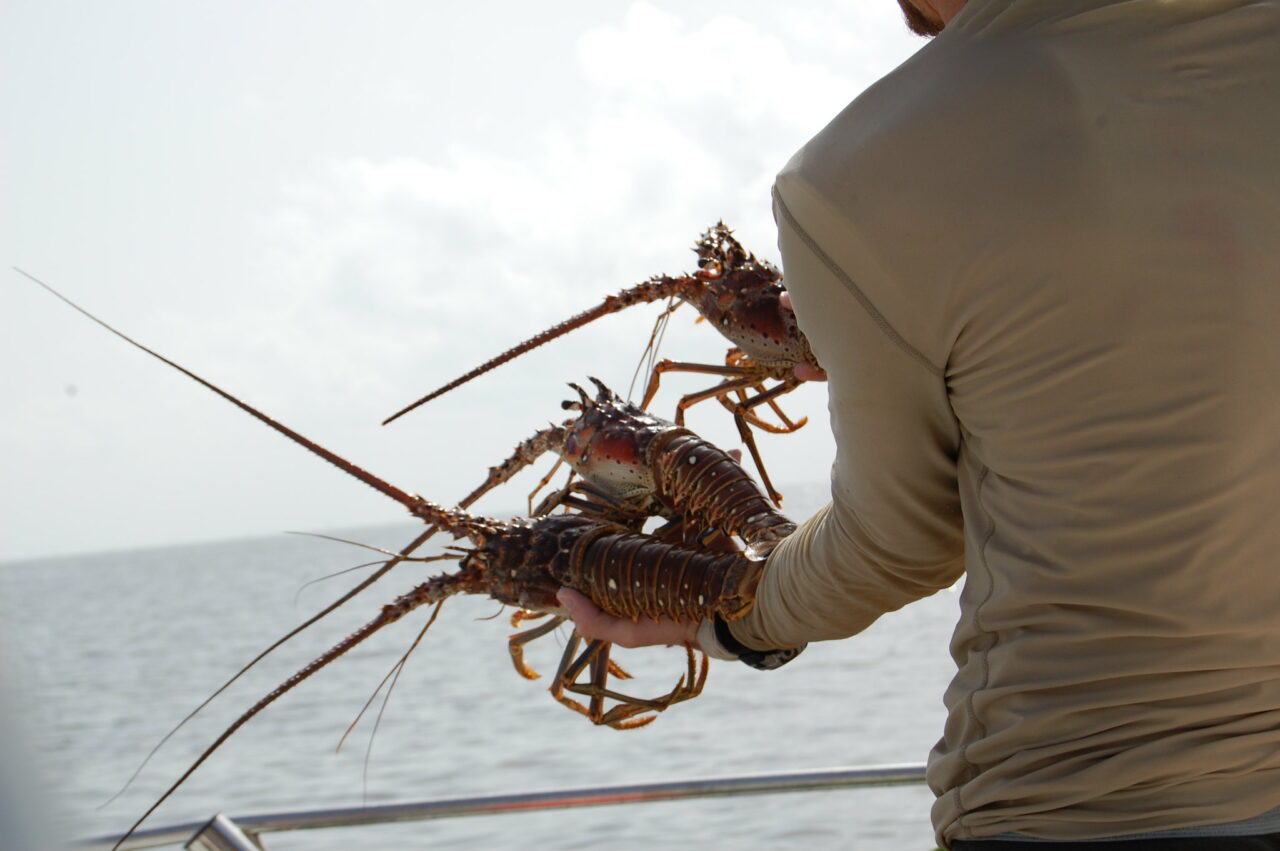
If you’ve been getting away with violating wildlife laws, there’s always the possibility it’s because the authorities are building a case against you.
Florida Fish and Wildlife Conservation Commission (FWC) and federal law enforcement investigated two 54-year-old Monroe County men for the better part of a year before arresting both on dozens of charges pertaining to illegal spiny lobster harvesting.
More people may know the clawless spiny lobster by one of its other names — the rock lobster.
Shane Matthew Sweeting, a commercial lobster diver from Big Pine Key, faces 54 counts of harvesting lobster within 10 yards of artificial habitat, 14 counts each of failure to display air and water identification placards, and three counts of seafood quality control code violations.
Also accused is Key West resident Michael Wayne Kimbler, who is charged with 51 counts of harvesting lobster within 10 yards of artificial habitat.
“I’m very proud of the teamwork and effort put forth by all of the personnel who worked on this investigation,” Col. Roger Young, the Director of FWC’s Division of Law Enforcement, said in a statement. “Conserving our precious natural resources for future generations is important work and these arrests today serve not only as a testament to the seriousness of these actions but also a warning to others who would exploit those resources for profit.”
The artificial habitats in question are constructed mostly of PVC, rebar and sheet metal, 4-by-8 feet wide and 4-to-6 inches high. Federal and state authorities surveilled the two men at 54 different sites in state, federal, national refuge and marine sanctuary waters, watching for illegal commercial harvest.
Regular spiny lobster season for recreational fishers runs from Aug. 6 to March 31, with a six-lobster per person daily bag and on-water possession limit. There are special rules for Monroe County.
Each harvested lobster must have a carapace longer than 3 inches, as measured in the water. Regular season harvest is prohibited in Everglades National Park, Dry Tortugas National Park, the Biscayne Bay/Card Sound Lobster Sanctuary, certain areas of the Florida Keys National Marine Sanctuary, and five coral reef protection areas in Biscayne National Park.
